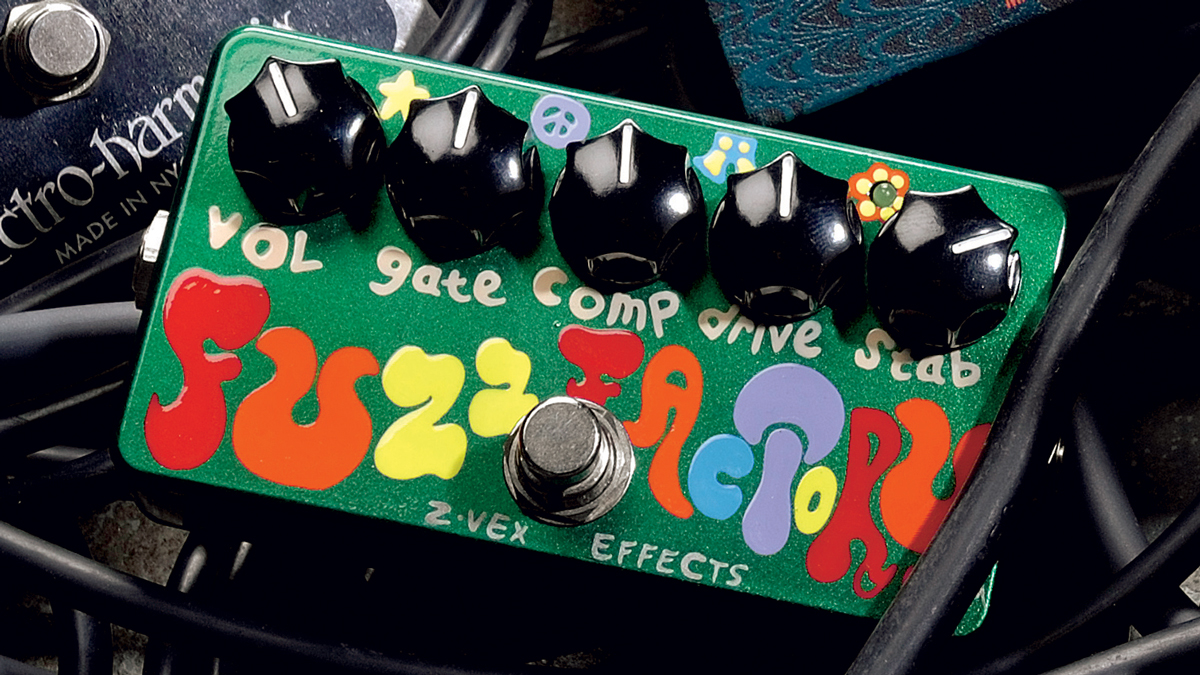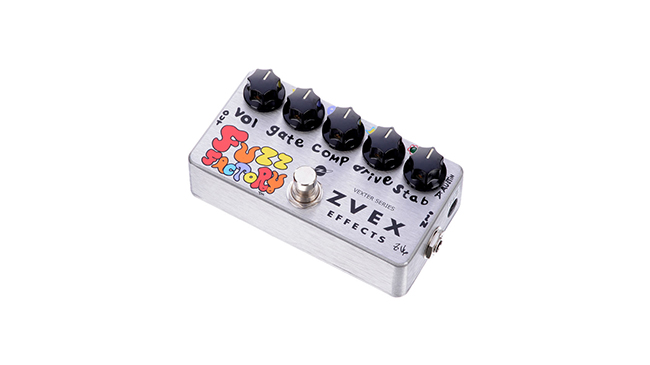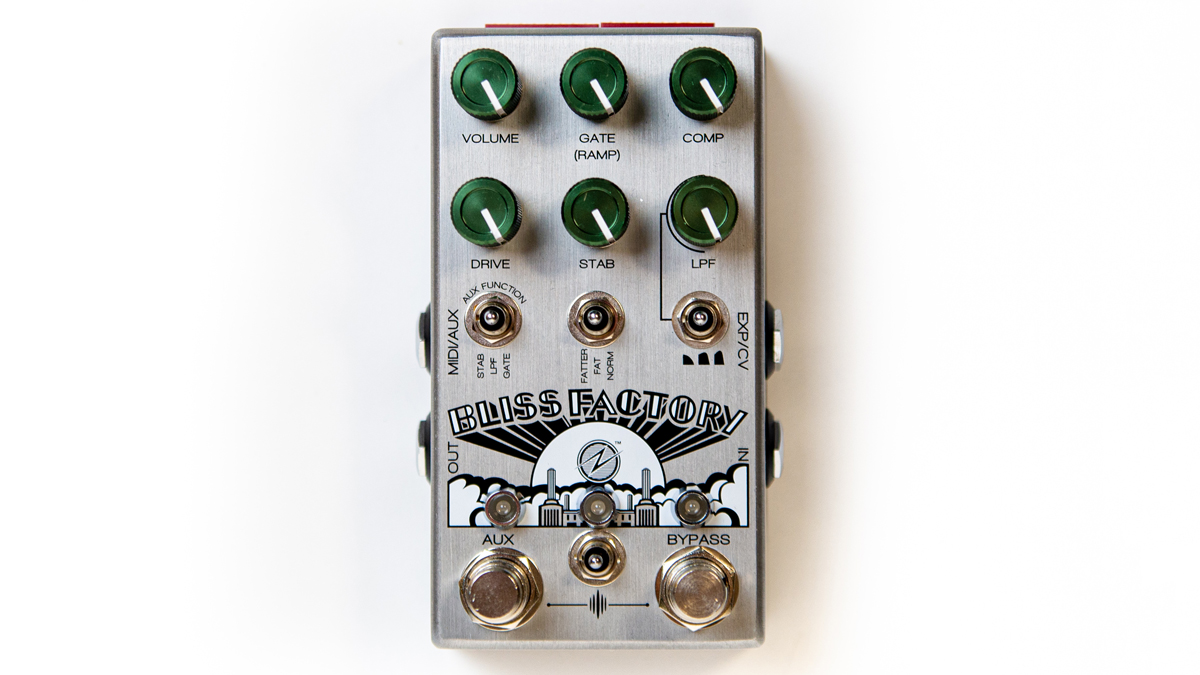25 years of the Z.Vex Fuzz Factory: how the iconic fuzz pedal was conceived during a single, feverish night in the '90s
Maverick effects maker Zachary Vex recalls how tragedy led to triumph in the creation of his most famous pedal

This year, US effects maker Z.Vex celebrates its 25th anniversary. The company is the creation of Zachary Vex, a sound engineer who got the bug for making effects during the grunge era – becoming a godfather of the indie stompbox scene in the process. Many of Zachary’s designs are rightly regarded as classics, from the brutal Super Hard On booster to the Plexi-style Box of Rock distortion.
His masterpiece, however, is the Fuzz Factory. Intuitive to use but near-infinite in its tone-sculpting potential, the five-knob design of this iconic fuzz pedal still cuts plenty of ice today.
In fact, rising maker Chase Bliss Audio and Z.Vex have just collaborated on an evolved, digitally controlled version called the Bliss Factory, offering yet another spin on Zachary’s Vex’s apparently ageless design.
When I called Zachary to talk to him about a quarter-century of Z.Vex Effects, I asked about the Fuzz Factory, assuming that it was a mature design he’d worked up to after a few years of building pedals.
Surprisingly, perhaps, he told me it was in fact only the second pedal he’d ever built – the first being an octave fuzz called the Octane, which made its low-key debut in a Minneapolis guitar store called Willie’s American Guitars.
By that point I was exhausted... I think I went to sleep at 11 in the morning
The store’s owner, Nate Westgor, bought Zachary’s first batch of Octane pedals sight unseen, trusting to his sound engineering background, and they sold out almost immediately.
Nate ordered more – leaving Zachary charged up with excitement about his future as a pedal maker. Local demand for the Octane was soon exhausted, however, and Nate told Zachary he didn’t need any more.
Get The Pick Newsletter
All the latest guitar news, interviews, lessons, reviews, deals and more, direct to your inbox!
This is where we pick up the extraordinary story of how Vex’s most famous creation, the Fuzz Factory, came to be designed literally overnight.
“I said ‘Well what do I do?’ Vex recalls, ‘And Nate said ‘Design me a new pedal!’ So I went home and I was shaking because my world kind of broke apart at that moment – somehow it had felt like things were going to keep growing and suddenly it felt like it was all gone in one day: a strange sensation. So, in my fright and complete panic I stayed up all night working on another pedal.
“I was thinking to myself, 'Well, I have an octave fuzz, how about if I just made a regular fuzz – something with its own tone but like a Fuzz Face-type thing?'
“I had some germanium transistors that I bought at a surplus store called Axe Man that would buy components from companies that were going bankrupt and then sell them really cheap. I walked in there one day and there was a bin full of these transistors and they were huge. They were the most interesting looking transistors I’d ever seen and they were only a dime apiece and so I bought them all.
“But these transistors were so odd… I plugged them in every possible way and no matter what I did the circuit sounded like mush – like there was nothing there. No gain, no fuzz, no fun.
- The 8 best fuzz pedals 2020: a guitar effects essential for your pedalboard

“I was pissed off, because I really wanted to make something and now it was getting really late at night,” he continues.
“So I put a little on the booster on the front of it, a little like an Electro-Harmonix LPB-1 booster, though not exactly the same. I built that on to the front of the pedal so now it was a three-transistor pedal and then the pedal just went haywire: it started squealing and making all kinds of weird noises and I couldn’t get it to settle down.
It's a way of manufacturing your own tone – something unique to yourself
“I took out a lot of the resistors that were fixed [value] and I put in pots instead. The idea was that I could start tweaking, using the pots to find the values that would get it to settle down and work right.
“I now had three knobs that didn’t really have good descriptions, because they were influencing such odd parts of the circuit, as well as a volume – but I could turn them all to different positions and get several different textures that I really loved.
“So I wrote out a little list that said things like: ‘turn this one to 60 degrees, turn this one to 20 degrees, turn that one to 120 degrees…’ you know? One of the sounds I named ‘Ripping Velcro’, for example. By that point I was exhausted... I think I went to sleep at 11 in the morning because I was up all night working on that thing.”
Many ‘brilliant’ ideas conceived in the dead of night don’t stand up to scrutiny in the cold light of day, of course, so when Zachary woke again, hours later he was concerned that exhaustion might have clouded his judgment. Was the pedal he’d built really any good or just the product of a tired mind and tired ears?

“I woke up in the afternoon and I thought, ‘I wonder if that thing sounds as good as I thought it sounded last night?’ and so I went and played through it again and sure enough it sounded just as good, if not better,” he recalls.
“So I thought, 'This is amazing, I love this thing… but it’s just really weird.' So my first idea was to put it in a box with all the knobs on it and then I’ll let my friends listen to it and tell me what their favourite sounds are and then I’ll put fixed resistors in and leave it that way.
“But when I started showing it off to my friends who liked my first pedal everybody thought I should leave all the knobs in. Because they just liked screwing around with it, turning all the knobs to different positions, getting all these crazy sounds.
I thought, 'This is amazing, I love this thing… but it’s just really weird'
“The prototype also had two switches: a bypass switch and then this other switch that flipped the ground – you could make it positive ground or negative ground – because it made the circuit a lot less stable when you made it positive ground. And I figured out why that was happening later and I got rid of that switch and turned it into another knob.
“So now I had five knobs but I didn’t know what to call it and I thought wait a minute, if I make it in the shape of a foot I can put one knob in each ‘toe’. But I had to give up on that because I couldn’t afford to get a foot-shaped sand casting made. So then I put it in a regular box and one day, while I was working on painting it, the name Fuzz Factory popped into my head – because it’s a factory of fuzz, a way of manufacturing your own tone – something unique to yourself.”
Zachary’s creation went on to become his first major hit, after it was reviewed in Guitar Player magazine by PJ Harvey guitarist and columnist Joe Gore. But the core of its success was really the way it connected with musicians. With its powerful analogue controls, the Fuzz Factory could be seen as both a blank canvas and a rich wall of sound, imposing few limitations on the musician’s creativity.
In a world of orderly but anodyne modellers and multi-effects the visceral excitement of using such pedals is as important now as it was a quarter of a century ago.
To sample the tonal melting pot of the Fuzz Factory yourself, 25 years on, either try Z.Vex’s original or check out the Chase Bliss x Z.Vex Bliss Factory, of which 1,000 units only have been made for sale via Reverb.com.
Jamie Dickson is Editor-in-Chief of Guitarist magazine, Britain's best-selling and longest-running monthly for guitar players. He started his career at the Daily Telegraph in London, where his first assignment was interviewing blue-eyed soul legend Robert Palmer, going on to become a full-time author on music, writing for benchmark references such as 1001 Albums You Must Hear Before You Die and Dorling Kindersley's How To Play Guitar Step By Step. He joined Guitarist in 2011 and since then it has been his privilege to interview everyone from B.B. King to St. Vincent for Guitarist's readers, while sharing insights into scores of historic guitars, from Rory Gallagher's '61 Strat to the first Martin D-28 ever made.
“The original Jordan Boss Tone was probably used by four out of five garage bands in the late ’60s”: Unpacking the gnarly magic of the Jordan Boss Tone – an actual guitar plug-in that delivers Dan Auerbach-approved fuzz
“This is a powerhouse of a stompbox that manages to keep things simple while offering endless inspiration”: Strymon EC-1 Single Head dTape Echo pedal review











